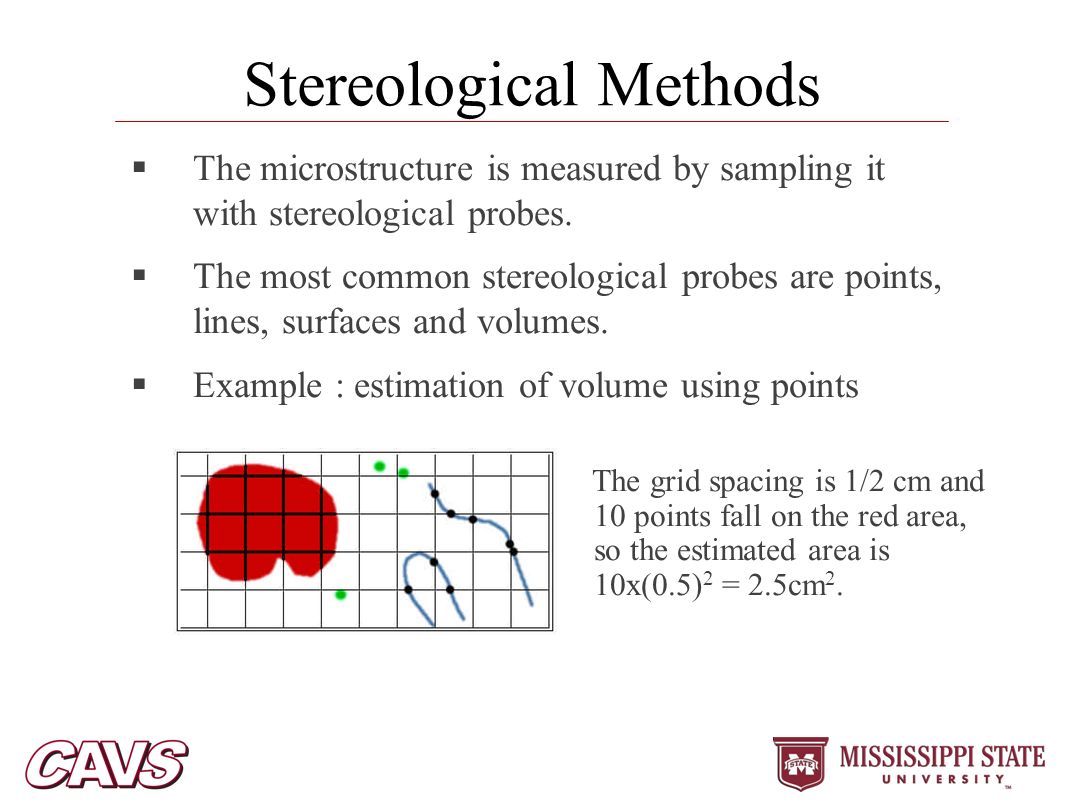
Qualitatively, the more events, in this example intersections, counted the more surface there is. For instance, if trying to estimate the amount of, or probing for, surface, it is most efficient to use line segments and count the intersections. In its most efficient form, ‘ events’, interactions between a virtual geometric probe and the feature being probed, are counted and used in mathematical formulas that are supported by simple geometrical concepts. The sampling procedure, also called the probe, is carefully planned ahead of time to avoid bias, and the amount of sampling is matched to the required precision. Design-based stereology, also known as unbiased stereology, has improved the reliability and efficiency of quantification in biological research. Examples include nearest neighbor information in distributions of cells and connectivity among branching objects. Information about the relationship among objects can be estimated using second-order stereology.

The area of something that appears in a plane is the ‘profile area’ or ‘cross-sectional area’.Įxamples include: number of brain cells within a brain region, the length of capillaries, the surface area of a membrane, the volume of a tumor, as well as the percentage of quartz in granite.

There are four cardinal quantities that are explored in first-order stereology.

It is simply the study of estimating geometrical quantities. The Greek root ‘stereo’ means solids stereology is the science of studying solids.


 0 kommentar(er)
0 kommentar(er)
